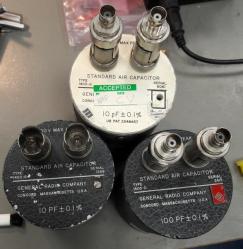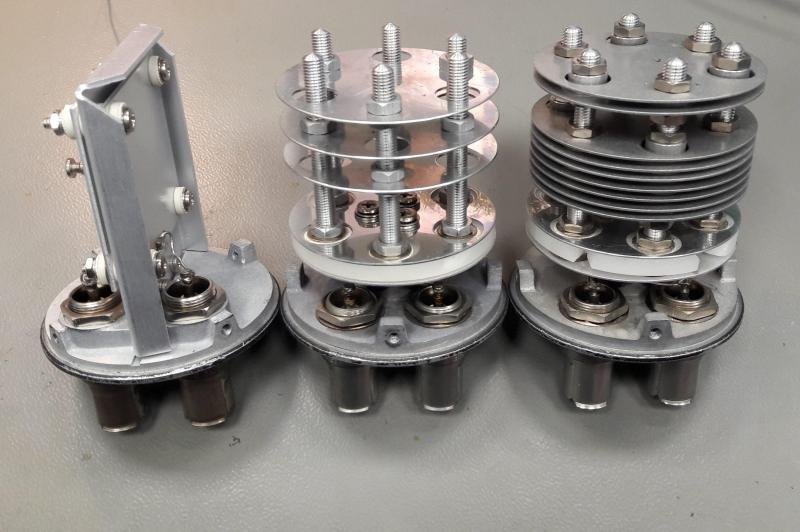Ah, the age old tradition of Dumpster diving! Sometimes we happen to spot something that’s not quite trash, but not quite perfect, either. And when [dzseki], an EEVblog.com forum user, spotted some high-precision capacitors being 86’d at their employer’s e-waste pile, [dzseki] did what any good hacker would do: took them home, tested them, and tore them down to understand and either repair or reuse them. They explain their escapades and teardown in this EEVblog.com forum post.

If you’re not familiar with capacitors, they are really just two or more plates of metal that are separated by an insulator, and in the case of these very large capacitors, that insulator is mostly air. Aluminum plates are attached with standard bolts, and plastic insulators are used as needed. There’s also discussion of an special alloy called Invar that lends to the thermal stability of the capacitors.
[dzseki] notes that these capacitors were on their way to the round file because they were out of spec, but only by a very, very small amount. They may not be usable for the precision devices they were originally in, but it’s clear that they are still quite useful otherwise. [dzseki]
Of course, Dumpster diving for cool parts is nothing new, and we’ve covered nifty projects such as this frankenmonitor bashed together from two bin finds.
Thank you [David] for the great tip, and don’t forget to leave your own in the Tip Line.















How does one use a precision capacitor that has to be attached with long cables?
The cable capacitance is a lot higher than the capacitor itself. I guess you get a lot of stray capacitance to the shield and have to design the circuit so that only capacitance between the center lines matters.
Just like with any other precision measurement: null the meter with the probes attached but the DUT out of circuit.
The enclosure of the capacitor is connected to shield of the measurement cable and buffer amplifier is used to drive the shield voltage to same as measurement. Cable capacitance begone.
And for us the difference of the capacitance from nominal is no problem. We calibrate ours every year.
No access to dump sites here in Germany :(, afaik. Would be cool, though.
Really depends on the region. Of course 15-20 years back, we could freely roam those huge containers full of PCs, monitors and other hardware. We had unlimited access to old and new PC hardware and electronics. Those times!!!
But there’s still lots and lots of Wertstoffhöfe around, you sometimes just have to ask really nicely what you’re up to. Give those guys working there a few Euros and you’re golden…
*and tell them what you’re up to, e.g. looking for some specific hardware.
Unfortunately they’re out of EDIT BUTTONS I could use to edit my prior post…
I saw on a WWII documentary that German guards are easily bribed with ‘apfle strudle’, then they ‘see nothing’.
Ah yes.
Still works that way!
That’s not strictly true, I would recommend this channel.
https://m.youtube.com/watch?v=lJctwUfWXss
Maybe I have to watch more of his videos but so far I didn’t get a hint on how he gets his stuff. A nice channel anyways, he salvages quite a bit of stuff and really puts work on it to make it usable again.
I live in the UK, but have wandered around a recycling centre / scrapyard in Stuttgart that welcomed scavengers.
All that they asked was that you wore one of their HiViz jackets as you wandered about.
You could make a pile of what you fancied, and they would come up with a price based mainly on weight.
I ended up with a couple of industrial servo motors, and was almost tempted by a Schaublin lathe before realising that it was a plain-turning model (120-VM) with no thread cutting. I don’t think that there was any danger of the lathe going for scrap, it was parked safely in a corner with some other machine tools looking for owners.
If anyone is near Stuttgart and wants to scavenge:
https://www.falkadler.de/
Is the one that I visited.